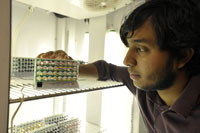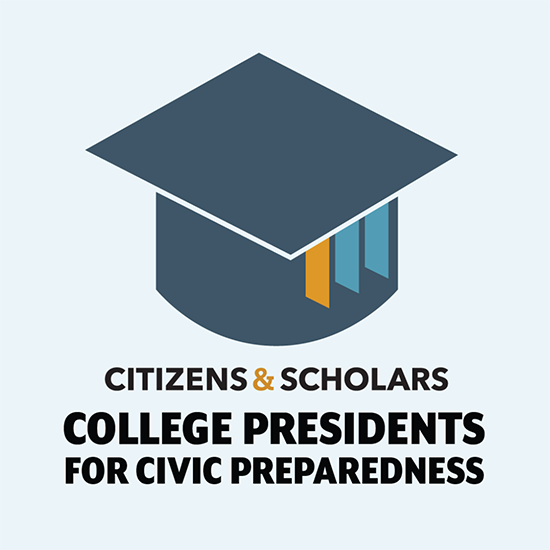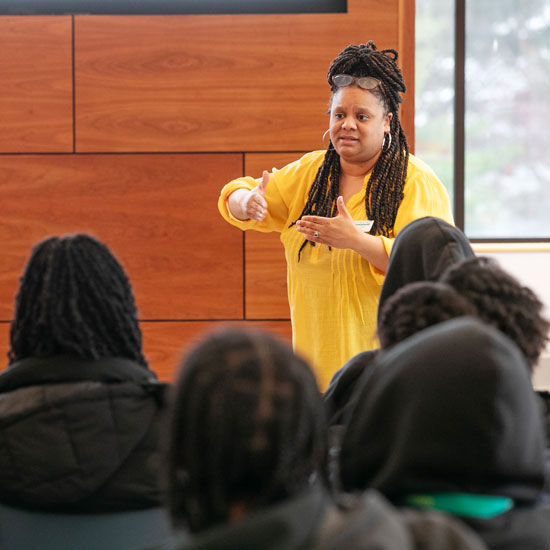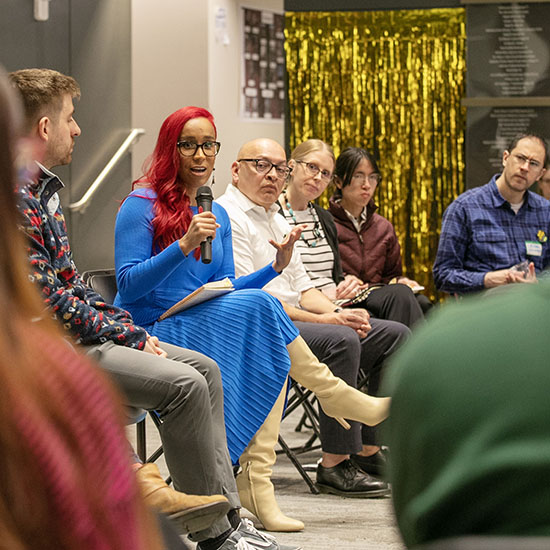Skidmore's magical summer-research program

Biology major Robert Kahn '14 in the lab.
Remember in the first Harry Potter movie when the new Hogwarts students file to the front of the Great Hall and don a tattered sorting hat to determine what house they will live in? There was tension and excitement in the air as they took their turns in full view of their new school community.
Minus the hats, nearly 100 Skidmore students participating in this summer’s faculty-student research program went through a kind of sorting exercise on the program’s first day in late May.
In Skidmore’s “great” dining hall, the students gathered at small tables to discuss their research topics. “Loud conversations, lots of questions, pretty intense and engaged,” reports program director and government professor Bob Turner. Hoping to recreate a little Hogwarts magic, he then threw out categories and asked students to stand if they fit: humanities and social sciences, biology, chemistry; sophomores, juniors, seniors; studying frogs, fish, mice, children, things smaller than a penny. The gathering concluded with a bingo game in which the name of a student went in each square—RNA extractions, Omeka Web-page publishing, and scores of others.
By morning’s end, just as Turner hoped, the students had a fuller appreciation for the totality of the research program—all 85 students and 46 faculty members tackling 62 projects from 16 different disciplines.
Among other things, they learned that their group is:
• working with zebrafish, algae, fruit flies, brown mice, preschool kids, frog eggs, the Vienna Riding School, the Ho Chi Minh Securities Corporation, and Chaucer’s Canterbury Tales
• tackling societal problems ranging from fetal alcohol syndrome, malaria, obesity, and neurodegenerative disease to PCBs, data encryption, computer processors, and the role of food in culture
• using some of the latest tools and methods, like intraperitoneal injections, the Python and Mathematica programming languages, RNA incubation, the Regional Ocean Modeling system, “cultural geography” theories of movement, paleography and codicology, and 3D printing.
• producing data for journal articles, books, conference presentations , Web pages, honors theses, and new courses
Also an important outcome, says Turner: “The students learn research in a discipline, but they also learn how their peers do it in other disciplines. At the dinner table or in the residence halls, I imagine questions such as, ‘What’s it like to read Middle English all day long?’ ‘What are the legal aspects of computer languages?’ ‘How do you actually detect malaria?‘ ‘What do you do all day, and what are your biggest challenges?’” He’s convinced that “understanding how students in other disciplines are approaching their research projects can open their mind to new ways of thinking about their own. Creative thought really does matter.”
July 1—the midway point for many of the research teams—was another gathering to share progress so far. In small tables that broke up and mixed all the teams, participants talked over issues like: What are the challenges in gathering, measuring, and ensuring the validity of your data? Is it harder or easier than you expected? What are the potential sources for error in your analysis? Is there a creative component of your data collection or analysis?
The complete summer ‘13 project list:
–Synthetic Strategies and their Application in the Organic Chemistry Lab
–Padre Martini's Closed and Enigmatic Canons, with Solutions by Luigi Cherubini: A Publication Project
–Modeling Fetal Alcohol Spectrum Disorder: Nervous System Defects
–The Implementation of Universal Pre-Kindergarten in Rural New York State: A Look Five Years Later 2008-2013
–Structural and functional characterization of polar expansion in plants
–Membrane trafficking in plant cells; the super highway of growth processes
–An Exploration of Steganography and Steganalysis
–The Influence of Unattended Information on the Processing of Attended Information in Selective Attention Tasks: Mediating Effects of Emotion and Hemispheric Specialization
–Development of a Rapid, Inexpensive Biomedical Diagnostics for Malaria and Food Allergies
–Will Children Learn a Complex Task through Imitation of an Unknowledgeable Adult?
–Numerical Simulation of Effects of Waves on the Upper Ocean
–Are artificial and natural sweeteners created equally?
–Faculty-Librarian Research: Partnerships and Alliances
–The impact of social class salience and meritocracy beliefs on experiences of students in higher education
–Extracellular contributions to alcohol and anesthetic modulation of ligand-gated ion channels
–Mechanistic studies of a putative anti-addiction drug in a prokaryotic model system
–Role of the hydrophobic gate in alcohol modulation of pentameric ligand-gated ion channels
–White Horses and Red Ink: The Spanish Riding School of Vienna
–Investigating mitochondrial dysfunction in mice and cell models of SCA1
–Establishing a degradation timecourse for cerebellar ATXN1 protein
–Comparing Structures of Online Stores: The Case of Museums and For Profit Businesses
–Creativity, Code and Big Data: Understanding Innovation in the Consumer Protection Context
–The role of the conjugated path in the optical response of molecules
–Haptic Perception in Blind and Sighted Subjects
–Greedy Resource Allocation in Simultaneous Multithreaded Processors
–Effects of Copper on a Fruit Fly Model for Alzheimer's Disease
–Are Effects of Lead on Mouse Circadian Activity Rhythms Transgenerational?
–Is Chronotype Correlated with Birth Time?
–Faith in the Workplace: Religion and Secularism in the Employment Sectors of India, Sweden and the U.S.A.
–Comida Latina: Spanning Cultures, Building Bridges
–Is the Anti-Obesity Action of MnTBAP Related to a Brown Fat Phenotype in Obese Mice?
–Asparaginyl-tRNA formation in Mycoplasma genitalium
–The Value of Institutional Privilege and Competitive Capacity in Vietnamese Stock Market


